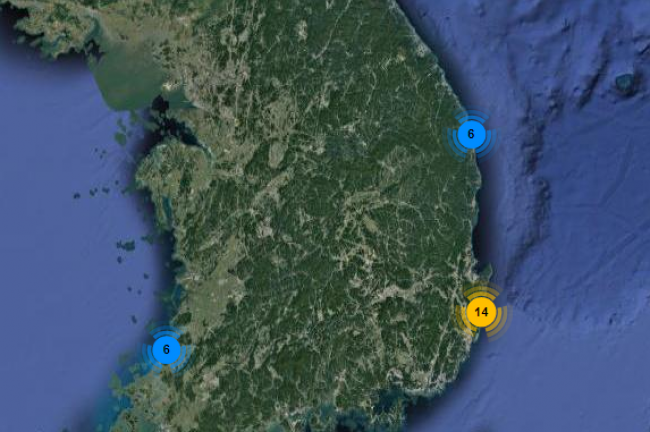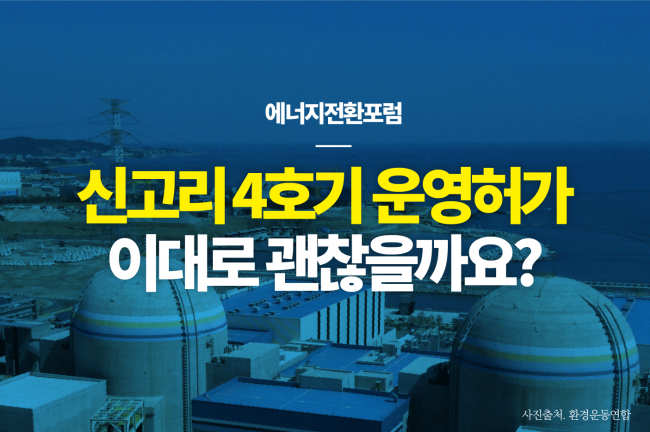피난 명령 해제, 올림픽 토치 릴레이
정부는 차례로 피해 지역에서 대피 명령을 해제하고 있습니다. 3 월 4 일, 동일본 철도 조반 선 후타바 마치 후타바 역 주변의 소위“복귀 곤란 구역”에서 대피 명령이 해제되었습니다. 3 월 5 일 오쿠마 마치 오노 역 주변. 3 월 10 일에는 토미 오카 마을 요노 모리 역 주변 지역이었습니다. 3 월 15 일, Joban Line 열차가 운행을 시작합니다. 그리고 3 월 말에 올림픽 토치 릴레이가 대피 명령이 해제 된이 지역을 통과 할 것입니다.
후쿠시마 현의 연구에 따르면 코리 야마시의 시간당 0.46 마이크로 시버트와 이테 테이트의 시간당 0.77 마이크로 시버트를 포함하여 도로 및 올림픽 토치 노선에서 시간당 오염 제거 표준 0.23 마이크로 시버트를 초과하는 방사선 량이 관찰되었습니다. 토치 중계 노선 및 주변 지역 69 개소에서 시민 방사능 모니터링 센터 (치쿠 린샤) 및 후쿠 이치 지역 환경 방사선 모니터링 프로젝트 (후쿠 이치 = 도쿄 전력 후쿠시마 다이 이치 원자력 발전소)의 조사에 따르면 62 건의 시간당 판독 값이 시간당 0.23 마이크로 시버트를 초과했습니다. 모든 조사 장소의 %와 높은 수준의 토양 오염이 7 곳에서 발견되었으며,이 수치는 백만 Bq / m2를 초과했습니다. 이 지역들은 대피 명령이 이미 해제 된 곳이며 주민들은 어떤 경우에 그곳에서 살고 있습니다.
"이것이 재건처럼 보이는가?"
대피 명령이 해제 된 경우에도 주민들의 귀환은 매우 느 렸습니다. 대피 명령이 이미 해제 된 지역의 점유율은 30 % 미만입니다 (이 수치에는 오염 제거 및 원자력 발전소 해체 작업자,“재건축”비즈니스 관련 직원 및 신규 거주자도 포함). 젊은이들은 돌아 오지 않고, 많은 지역에서 대다수 가정은 1 ~ 2 명의 노인으로 구성됩니다.
“내 동네에서는 점점 더 많은 집이 무너지고 있습니다. 사실상 원래 커뮤니티의 흔적은 없습니다. 이것이 재건처럼 보이는가?” 그 말은 토미 오카에 살기 위해 돌아온 91 세 남자의 말입니다.
그럼에도 불구하고 피난민을위한 주택 및 기타 형태의 지원은 꾸준히 중단되고있다. 2020 년 3 월, 후타바와 오쿠마시를 제외하고는“복귀하기 어려운 구역”에서 피난민을위한 무료 주택 제공이 중단되었습니다. 영향을받은 2,274 가구 중에서 221 가구는 여전히 4 월 이후 주택을 확보 할 전망이 없습니다.
사고 당시 18 세 미만인 사람에 대한 후쿠시마 현의 정기 갑상선 검사에서 갑상선 암 진단 또는 의심되는 237 명이 발견되었으며,이 중 186 건의 갑상선 암이 수술로 확인되었습니다 (공개 기준 수치) 2020 년 2 월 13 일까지 사용 가능한 자료). 그러나 우리는 많은 사례가 간과되었음을 알고 있으므로 갑상선 암의 실제 수치와 의학적 사례가 항상 공식적으로 언급 된 것은 아닙니다. 현위원회는 1 차 시험과 2 차 시험의 결과가 "질병 통계 등으로 추정 된 사례보다 수십 배나 더 높다"고 밝혔다. "사고의 영향을 고려하기가 어렵습니다." 일부 전문가들은“과잉 진단”이 갑상선 암의 많은 사례가 발견되는 이유 중 하나라고 주장합니다.
오염 제거 작업으로 인한 오염 토양 재사용, 오염 된 물의 해양 방출 오염
제거 작업으로 인해 발생하는 "오염 된 토양"을 시야에서 사라지게하려는 노력도 있습니다. (이것은 오염 제거 작업의 결과로 인구가 많은 지역과 농지에서 제거 된 토양입니다. 여기에는 저수준의 방사성 물질이 포함되어 있습니다.) 일본 환경부는 1400 만 입방 미터의 오염 된 토양을“재사용”하는 정책을 발표했습니다 공공 사업 및 농지 개발 프로젝트. 교육부는 4 월부터 관련 규정을 시행 할 계획이다. 그러나 분명하지 않은 것은 충분한 정보가 공개 될지 여부와 주민들에게 설명이 제공되는지 여부입니다.
많은 지역의 주민들이이 계획에 우연히 반대했습니다. 후쿠시마 현 니혼 마츠의 농업 도로 시범 프로젝트는 지역 사회의 강한 반대에 의해 취소되었습니다. 국방부는 오염 된 토양을 노반 도로오다 카구 (미나미 소마시)의 4 개 차선으로 확장하기 위해 노반 충진재로 사용하는 시범 프로젝트를 계획하고 있지만, 지방 행정 구역의 모든 책임자는 반대하고 있습니다.
후쿠시마 다이 이치 원자력 발전소 현장의 첨단 액체 처리 시스템 (ALPS)에서 처리 된 오염 된 물의 양은 계속 증가하고 있습니다. 이미 960 개의 탱크가 116 만 입방 미터의 처리 수를 저장하고 있습니다.
오염 된 물을 육상의 대형 탱크에 저장하고, 박격포 응고를 사용하고, 현재 부지를 확장하기위한 대안적인 제안이 있었지만, 오염 된 물의 처리를 조사한 정부위원회는 최종 보고서를 제출하여 제안 된 대안을 적절히 고려하지 않아도 해양은 실행 가능한 옵션입니다.
Lifting of evacuation orders, Olympic torch relay
One after another, the government is lifting evacuation orders in the affected area. On March 4, evacuation orders were lifted in so-called “difficult-to-return zone” around Futaba Station, Futaba town on the Joban Line of East Japan Railway Company. On March 5 it was the area around Ono Station in Okuma town. On March 10 it was the area around Yonomori Station, Tomioka town. On March 15, the Joban Line trains will start running. And at the end of March, the Olympic torch relay will be passing through these areas where evacuation orders were lifted.
According to studies by Fukushima Prefecture, radiation doses far exceeding the decontamination standard of 0.23 microsieverts per hour have been observed along roads and the Olympic torch route, including 0.46 microsieverts per hour in Koriyama city and 0.77 microsieverts per hour in Iitate. According to surveys by the Radioactivity Monitoring Center for Citizens (Chikurinsha) and the Fukuichi Area Environmental Radiation Monitoring Project (Fukuichi = TEPCO Fukushima Daiichi nuclear plant) at 69 sites along the torch relay route and surrounding area, readings exceeded 0.23 microsieverts per hour at 62% of all survey sites, and high levels of soil contamination were found at seven sites, where readings exceeded one million Bq/m2. These areas are where evacuation orders have already been lifted, and residents are living there in some cases. This leaves one the impression that the need to protect people from radiation exposure is not being treated seriously enough.
“Is this what reconstruction looks like?”
Even where evacuation orders have been lifted, the return of residents has been very slow. The occupancy rate is below 30% in areas where evacuation orders have already been lifted (this number even includes decontamination and nuclear plant deconstruction workers, “reconstruction” business-related personnel and new residents). Young people are not returning, and in many areas the majority of households consist of one or two elderly persons.
“In my neighborhood, more and more houses are being torn down. There is virtually no trace of the original community. Is this what reconstruction looks like?” Those are the words of a 91-year-old man who returned to live in Tomioka.
Despite this, housing and other forms of assistance for evacuees is steadily being terminated. In March 2020, the provision of free housing stopped for evacuees from “difficult-to-return zones” with the exceptions of the towns of Futaba and Okuma. Among the affected 2,274 households, 221 of them still have no prospect of securing housing for April onwards.
Regular thyroid gland testing by Fukushima Prefecture for persons who were under the age of 18 at the time of the accident has found 237 persons diagnosed with or suspected of thyroid cancer, of which 186 cases of thyroid cancer were confirmed by surgery (numbers based on publicly available materials, up to February 13, 2020). However, we know that many cases have been overlooked, so the real numbers and medical cases of thyroid cancer are not always as stated officially. A prefectural committee stated that the results of the first and second rounds of testing were “tens of orders of magnitude higher than the number of cases estimated from disease statistics, etc.” and “It is difficult to consider the impacts of the accident.” Some experts claim that “over diagnosis” is one reason so many cases of thyroid cancer are being detected, but doctors who performed surgeries have stated that many patients had lymph node metastases and that it had spread to surrounding tissue, and that surgery is required in both cases.
Reuse of contaminated soil arising from decontamination work, ocean release of contaminated water
There are also efforts to make “contaminated soil” arising from decontamination work disappear from view. (This is soil that has been removed from populated areas and farmland as a result of decontamination work. It contains low-level radioactive material.) Japan’s Ministry of the Environment has announced a policy to “reuse” 14 million cubic meters of contaminated soil in public works and agricultural land development projects. The Ministry intends to begin implementing the related regulations in April. But what is not clear is whether sufficient information will be disclosed and explanations provided to residents.
Residents in many communities have vociferously opposed these plans. A demonstration project for an agricultural road in Nihonmatsu, Fukushima, was cancelled due to intense opposition from the community. The Ministry is planning a demonstration project to use contaminated soil as roadbed fill to expand the Joban Expressway to four lanes in Odaka Ward (Minamisoma City), but all heads of the local administrative districts are opposed.
The volume of processed contaminated water from the Advanced Liquid Processing System (ALPS) at the Fukushima Daiichi nuclear plant site continues to grow. Already 960 tanks are storing 1.16 million cubic meters of treated water.
Alternative proposals have been made to store the contaminated water in large tanks on land, to use mortar solidification, and to expand the current site, but the government committee that examined the treatment of contaminated water has submitted its final report, concluding that discharge into the ocean is a viable option, even without having adequately considered the alternatives proposed.










최근 댓글
본 세미나의 발표자료를 받을 수…
PDF 파일을 재업로드하였습니다…